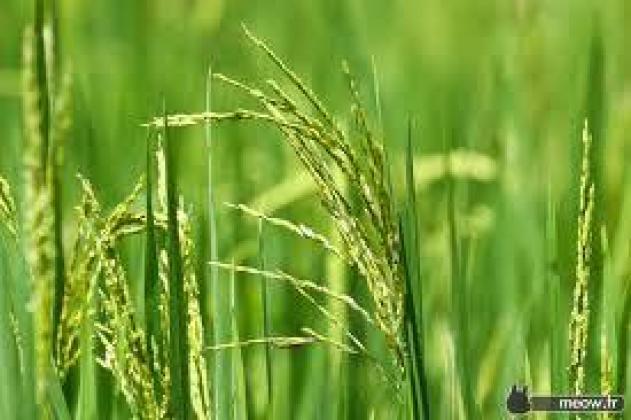
Jim Bradshaw
Some historian say advances in harvesting machinery were a big reason for the growth of the Louisiana rice industry in the late 1800s. But they get an argument from people who say that distinction should go to a simple, steam-powered pump that made it possible to grow rice in places it hadn’t been grown before.
Without the pump, they say, there would be no rice and no need for the harvesters.
Harvesting machinery, such as the string binder, was brought to south Louisiana by farmers from the Midwest who had used it to cut and bind wheat. It did have a major impact because it quadrupled the amount of rice that could be harvested in a single season. But the centrifugal pump also opened thousands of acres to rice cultivation. Until it was put to work, rice was grown only where it could be naturally irrigated.
Early in 1896, W. J. Marshall, a man said to have “wide experience as an agriculturist and as a writer,” toured south Louisiana’s rice belt to look particularly at how farmers here used the pumps and how they might be adapted to other places. He wrote about what he found in “Texas Farm and Ranch,” which was described by the Crowley Signal as “the leading agricultural paper of the South.”
Marshall wrote that he came to south Louisiana because he wanted to see “the most perfect system of centrifugal pump irrigation plants to be found in the United States.” At that time, he said, the young town of Crowley (not yet a dozen years old) enjoyed “the distinction of being the largest rice shipping point in the world.”
Jean Castex, one of the first settlers of Mermentau, kept a store on the river but also farmed about 250 acres of rice. He was credited as being one of the first rice growers in south Louisiana to use the pumps. “As a result of his success,” according to an 1894 account in “The Farm Implement News,” “twenty outfits … near his place … ranging from 100 to 800 acres [began using the pumps] within the last three years.”
Castex and his neighbors apparently began using the pumps in the 1880s, or earlier.
“Many of these [pumping] plants in Louisiana have been in operation for upward of ten years,” “Farm Implement News” reported. “It has passed the experimental stage.” According to the newspaper, more than 3,000 pumps “of just one make” were being used to flood south Louisiana rice land in 1894.
That’s what W. J. Marshall came to see in 1896.
“Eight years ago,” he wrote, “the rice industry of Southwest Louisiana was … of little account and its crop cut very little figure in the world’s supply. … But today the rice fields cover thousands of acres on the highland prairies. The greatest element in bringing about this transformation is to be found in the extensive systems of irrigation. … These systems consist of pumping plants driven by steam engines, and it is here we must come [to see what can be done] by irrigation where the water must be raised to the level of the lands where it is to be used.”
Marshall particularly wanted to see the work begun by David Abbott, who came to south Louisiana in 1888 and is generally credited with the idea of using pumps and canals to irrigate large swatches of the countryside, and by developers C.C. and W.W. Duson, who began their own irrigation system about the same time.
Marshall first visited the Duson brothers plantation, about a mile and a half north of Crowley, where 900,000 gallons of water could be pumped in an hour into a canal that was five miles long and irrigated 3,500 acres. He next visited the Abbot brothers, “just across the bayou” from the Dusons. Their pumps could handle 1,800,000 gallons per hour, which poured into a canal 10 miles long and irrigated “upwards of 5,000 acres.”
At the Vermilion Canal Company plant on Bayou Queue de Tortue, 15 miles from Crowley, he found “one of the largest [pumping plants] in the state.” It could pour 75,000 gallons per minute — minute, not hour — into a canal 15 miles long that irrigated 25,000 acres.
“All of this magic has been wrought by the pluck and energy of the people who have been brought to this country by the enterprise of the Duson brothers, who early saw what irrigation could accomplish for this naturally beautiful bayou and prairie country,” Marshall reported. He urged anyone interested to “get your ticket for Crowley,” to pay a visit to the Dusons who “will take pleasure in showing you what can be accomplished … largely by aid of steam irrigation plants.
“You will learn how it is that a country which gave employment to only one self-binder in the harvest of 1884 came to require the use of over 4,000 to gather the crop of 1893,” he said.
In the southwest Louisiana rice country, he promised, “You will find a wide-awake, enterprising and busy people, who will be glad to hospitably entertain the stranger who comes to investigate.”
Somebody was paying attention, by 1900 there were 25 irrigating canals in Acadia, Calcasieu, Cameron, and Vermilion parishes, with more than 400 miles of main canals and double that in smaller ones carrying water to practically every rice field in the region.
A collection of Jim Bradshaw’s columns, Cajuns and Other Characters, is now available from Pelican Publishing. You can contact him at jimbradshaw4321@gmail.com or P.O. Box 1121, Washington LA 70589.
